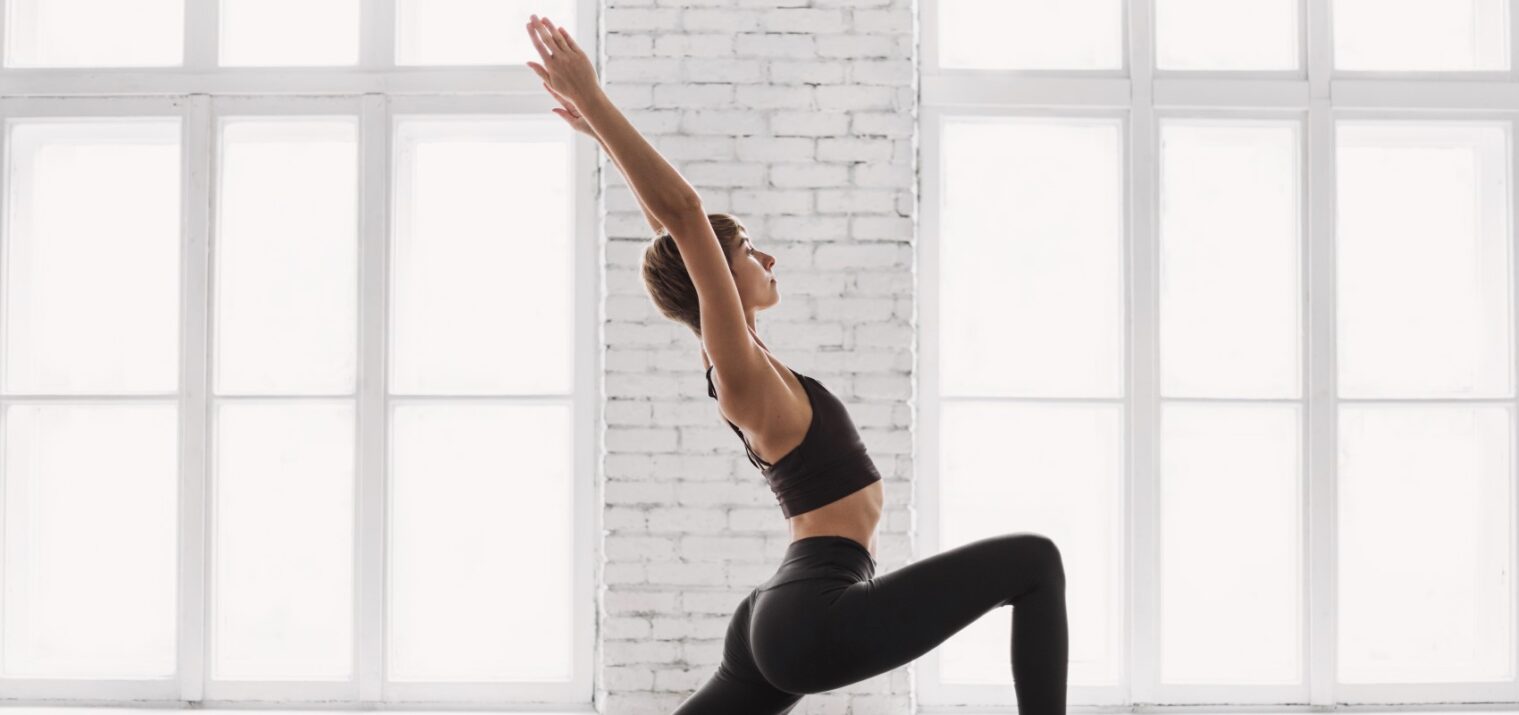
Discover our new yoga workouts
Couldn’t wait any longer? Neither could we! Our HUMANOO yoga exercises have arrived! From now on you’ll find lots of yoga workouts as well as fascinating facts about the origins of yoga in our app – developed for you by our HUMANOO experts.
If you don’t manage to move as much as you’d like because of your job, or you suffer from pain from all the hours you spend at your desk, yoga is perfect for you! Our yoga programmes offer workouts for both beginners and advanced yogis. The sessions include thorough power workouts as well as calming exercises for relaxation and stress reduction. You’ll also find yoga sessions that can easily be done during your lunch break or even at your desk. Have a look at our wide range of exercises – we’re sure you’ll find something you’ll like! Sound good? Then grab your yoga mat and let’s get started!
Want to find out more about yoga first? No problem, here is a little introduction for you:
What is yoga?
Yoga is a holistic system of exercises that brings the body and mind into balance. Yoga primarily aims to let the mind become still and free. It offers a holistic approach to health that helps you gain physical, emotional and mental balance through physical exercise. The type of yoga we practice today is adapted to the needs of the modern age. Most people sit at a desk for long periods of time and suffer from stress and back pain. As a result, they’re often looking for ways to relieve tension, exercise and find inner calm and focus.
Where does yoga come from?
Yoga comes from India and has been around for more than 3000 years. Yoga is originally part of Indian tradition and spirituality, but it’s not a religion; yoga is a philosophy and a method that anyone can learn. The aim of yoga in the traditional sense is to find yourself and achieve a state in which you’re at one with the world.
How does yoga work?
A lot of studies have noted the positive effects of yoga. It can relieve and prevent back pain, especially in the neck and shoulder area. Yoga also has an effect on the parasympathetic nervous system, which brings about relaxation, leading to a reduction in stress levels. Yoga has a positive effect on sleep too, since it helps relax the body and the mind. It also gives you more energy and makes you more active, flexible and strong, which increases your wellbeing and quality of life. The mental effects of yoga include more confidence, a sense of stability and peace of mind, even in stressful situations.
Who can do yoga?
Anyone can do yoga, no matter what age they are. It’s not about achieving the perfect form, but moving with awareness and bringing the body, mind and breath into balance. Sometimes it also means taking a break when you need one. You shouldn’t practice when you’re ill (i.e. an inflammation). Once the symptoms ease out and you feel better you can start practicing again. Pregnant women shouldn’t start doing yoga in their first trimester if they haven’t practiced before. There are also alternative poses for pregnant women which the teacher should demonstrate. If you have a serious condition or injury you should consult your doctor before starting to do yoga.
What do you need to do yoga?
You’ll need a yoga or an exercise mat. A thinner mat is better because it gives you more grip. Your mat should be non-slip and not move around whilst you practice. A blanket is also useful to have, especially for the relaxation at the end. Yoga is usually practiced barefoot so that you don’t slip and have better contact with the ground. Your clothes should be comfortable and stretchy. Normal sportswear works just fine.